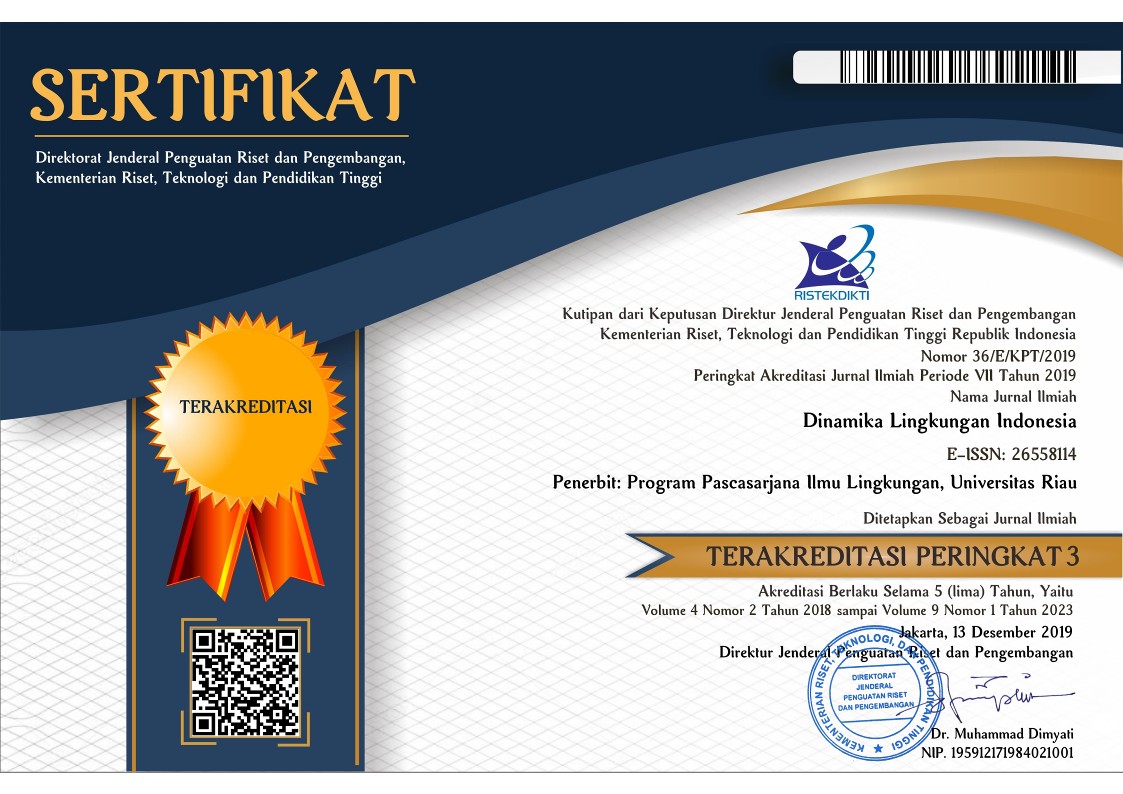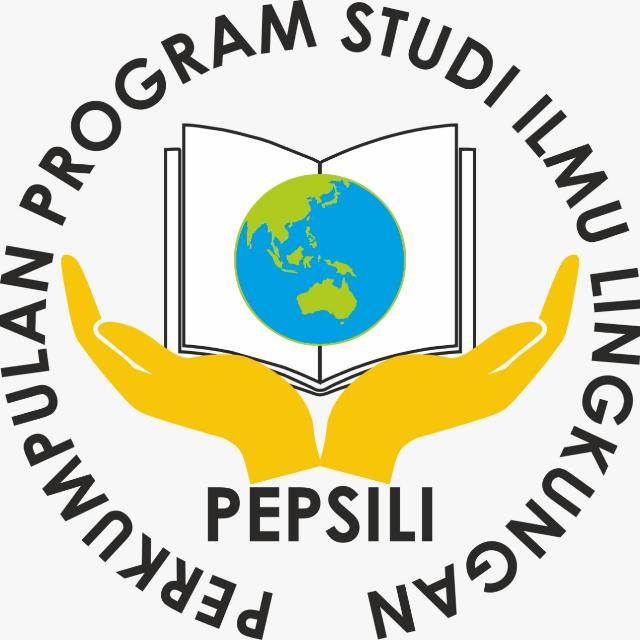Kesesuaian dan daya dukung lingkungan untuk pengembangan ekowisata di kawasan hutan Gunung Mareje Utara Kabupaten Lombok Tengah
Abstract
North Mareje Mountain Forest Area (NMMFA) is one of important areas for ecotourism development in Lombok Island. Currently integrated ecotourism management plan (IEMP) is not available for this area, it has caused land degradation and natural disasters. To support sustainable IEMP establishment, this study was conducted with objectives to analyze land suitability and assessing the environmental carrying capacity of ecotourism development. The study conducted in NMMFA, Serage Village, Central Lombok, NTB during January - March 2020. The data used in this study include attractiveness, landscape naturalness, bio-geophysical limiting factors, accessibility, optimal space requirements and length time of tourist activities. Secondary data compiled from various sources and primary data collected by field observations and interviews. Land suitability analysis used weighted linear combination (WLC), environment carrying capacity analyzed by Douglas Method (Zacarias et al., 2011) and the evaluation conducted by t-test. Based on the analysis, explained that land suitable area for ecotourism in NMMFA is 1.235,2 Ha (75,8% of total area). Effective carrying capacity (ECC) is 32.729 visitors/day. The important indicators contributed to land suitability include soil conservation, tree diversity, visibility and natural attractiveness. T-test analysis shows that the actual landuse for ecotourism smaller than potential area, the average number of tourist visits in the area also smaller than the ECC. It can be concluded if the current land utilization have been meet with land suitability and environmental carrying capacity.
Keywords
Full Text:
PDFReferences
Arifin S., & Utomo, B. (2018). Kajian pengembangan ekowisata Salang Pangeran Di Kawasan Taman Nasional Gunung Leuser. Serambi Engineering, Volume 3(1), 197-208. DOI:
https://doi.org/10.32672/jse.v3i1.345
Ashari, A. (2013). Kajian tingkat erodibilitas beberapa jenis tanah di Pegunungan Baturagung Desa Putat dan Nglanggeran Kecamatan Patuk Kabupaten Gunungkidul. Informasi, Volume 1(39), 15-31. DOI: https://doi.org/10.21831/informasi.v0i2.4441
Bali, A., Seyed, M.M, Borhan, R., Nematollah, K, & Mir M.K.Z (2015). A spatial decision support system for ecotourism development in Caspian Hyrcanian mixed forests ecoregion. Bol. Ciênc. Geod., sec. Artigos, Volume 1 (2), 340-353. DOI: https://doi.org/10.1590/S1982-21702015000200001
BPS Lombok Tengah. (2017). Kabupaten Lombok Tengah dalam Angka Tahun 2016. Kantor BPS Lombok Tengah. Praya.
Bunruamkaew, K. & Murayama. (2011). Site suitability evaluation for ecotourism using GIS and AHP: A Case study of Surat Thani Province, Thailand. Procedia - Social and Behavioral Sciences, Volume 21, 269-278.DOI: https://doi.org/10.1016/j.sbspro.2011.07.024
Dishutbun Lombok Tengah. (2017). Statistik Kehutanan Lombok Tengah 2016. Kantor Dishutbun Lombok Tengah. Praya.
Fandeli, C. & Muhammad (2009). Prinsip - Prinsip Dasar Mengkonservasi Landskap. Universitas Gadjah Mada Press. Yogyakarta.
Friedman, H.J. (2002). Stochastic gradient boosting. computational statistics & data analysis, Volume 38(4), 367-378. DOI: https://doi.org/10.1016/S0167-9473(01)00065-2.
Hardjowigeno, S., & Widiatmaka. (2018). Evaluasi Kesesuaian Lahan dan Perencanaan Tata Guna Lahan. Gadjah Mada University Press. Yogyakarta
Ilmi, M.K. (2019). Kajian pengaruh perubahan tata guna lahan terhadap kondisi hidrologi daerah aliran sungai (DAS) Dodokan, Provinsi Nusa Tenggara Barat. Prosiding Konferensi Nasional Pascasarjana Teknik Sipil (KNPTS) X, ISSN 2477-00-86, 103-113.
Kastarlak, B.I., & Barber, B. (2014). Fundamentals of Planning and Developing Tourism. Pearson Education Limited. Essex, UK.
Lopez, J.M.R., Heiderb, K., & Scheffran, J. (2017). Frontiers of urbanization: identifying and explaining urbanization hotspots in the south of Mexico City using human and remote sensing. Applied Geography, Volume 79, 1-10. DOI: https://doi.org/10.1016/j.dib.2016.12.049.
Lucianti S., Boedi H., & Munifatul, I. (2013). Penilaian daya dukung wisata di obyek wisata Bumi Perkemahan Palutungan Taman Nasional Gunung Ciremai Propinsi Jawa Barat. Prosiding seminar nasional pengelolaan sumberdaya alam dan lingkungan, ISBN 978-602-17001-1-2, 232-240.
Mirsanjari, M.M. (2012). Importance of environmental ecotourism planning for sustainable development. OIDA International journal of sustainable development, 4(2), 85–92.
Sandhyavitri, A., & Ichsan, R. (2014). pengembangan kriteria-kriteria rencana pemindahan perkantoran di Kota Pekanbaru berdasarkan AHP (analytical hierarchy process). Jurnal Eko Rekayasa, Volume 10(1), 1-14.
Sugiyono. 2012. Metode Penelitian Kuantitatif Kualitatif dan R&D. Alfabeta. Bandung.
Wickramasinghe, K. (2013). Ecotourism as a tool for sustainable forest management in Sri Lanka. Institute of Policy Studies of Sri Lanka (IPS), Volume 100(20), 16-29. DOI: https://doi.org/10.4038/jepsl.v1i2.5145.
Wiryanto, Sunarto, & Slamet, M.R. (2017). biodiversity of mangrove aquatic fauna in Purworejo, Central Java, Indonesia. Biodiversitas, Volume 18(4), 1344-1352.
Zacarias, D.A., Wiliams, A.T., & Newton, A. (2011). Recreation carrying capacity estimation to support beach management Praira de Faro Portugal. Jurnal of Applied Geography, Volume 31, 1075-1081.DOI:https://doi.org/10.1016/j.apgeog.2011.01.020
DOI: http://dx.doi.org/10.31258/dli.8.1.p.17-28
Refbacks
- There are currently no refbacks.





